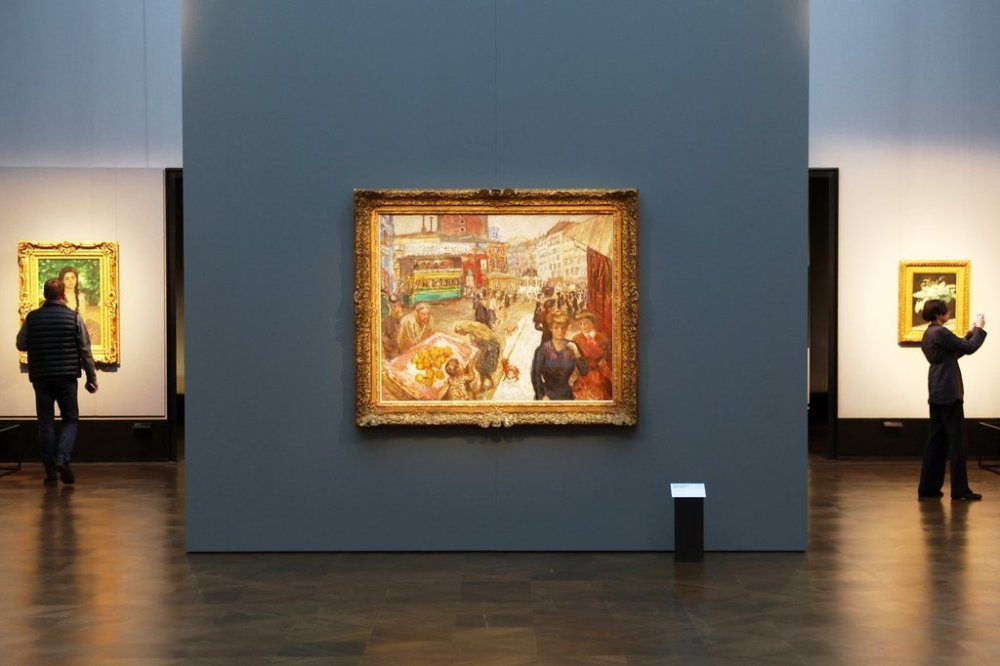Who’s who of French artists in focus as a major private art collection goes on show in Berlin
Advertisement
Read this article for free:
or
Already have an account? Log in here »
To continue reading, please subscribe:
Monthly Digital Subscription
$1 per week for 24 weeks*
- Enjoy unlimited reading on winnipegfreepress.com
- Read the E-Edition, our digital replica newspaper
- Access News Break, our award-winning app
- Play interactive puzzles
*Billed as $4.00 plus GST every four weeks. After 24 weeks, price increases to the regular rate of $19.00 plus GST every four weeks. Offer available to new and qualified returning subscribers only. Cancel any time.
Monthly Digital Subscription
$4.75/week*
- Enjoy unlimited reading on winnipegfreepress.com
- Read the E-Edition, our digital replica newspaper
- Access News Break, our award-winning app
- Play interactive puzzles
*Billed as $19 plus GST every four weeks. Cancel any time.
To continue reading, please subscribe:
Add Free Press access to your Brandon Sun subscription for only an additional
$1 for the first 4 weeks*
*Your next subscription payment will increase by $1.00 and you will be charged $16.99 plus GST for four weeks. After four weeks, your payment will increase to $23.99 plus GST every four weeks.
Read unlimited articles for free today:
or
Already have an account? Log in here »
BERLIN (AP) — A major German private art collection accumulated over four generations is going on large-scale show for the first time in Berlin, with a who’s who of French art of the 19th and 20th centuries at its core.
The Scharf Collection has its roots in a collection started more than a century ago by Otto Gerstenberg, who led a Berlin life insurance company. It’s now in the hands of Gerstenberg’s great-grandson, René Scharf, and his wife, Christiane, who have expanded it further into contemporary art.
The roughly 150 works going on show this week at Berlin’s Alte Nationalgalerie range in time from the early 19th century, with plates from Spanish master Francisco de Goya’s series “The Disasters of War” and “La Tauromaquia,” to modern abstract works by German artists Katharina Grosse and Anselm Reyle. Compositions by Sam Francis and Jasper Johns bring an American element to the collection.

“We go from Goya to Grosse,” René Scharf said as the exhibition was presented Wednesday. He said that he has a particular passion for impressionism, cubism and contemporary art, and hopes visitors who see Grosse’s shimmering pink and blue “No title” at the end of the show will see a connection to Claude Monet’s impressionist “Waterloo Bridge” from nearly a century earlier.
At the heart of the collection are works by many of the biggest names in French art of the past two centuries. Visitors progress from the romantic paintings of Eugène Delacroix to the realist work of Gustave Courbet and the caricatures of Honoré Daumier, including a series of busts of French lawmakers by the latter.
One of Claude Monet’s earlier, realist works, “Farmyard in Chailly,” is displayed alongside later impressionist paintings such as “Steep Cliffs near Dieppe” and one of his “Waterloo Bridge” series. There are works on paper and canvas by Auguste Renoir and Paul Cézanne, complemented by nudes and dancers by Edgar Degas.
Two of Pierre Bonnard’s major works are prominently displayed — the lively and playful “Place Clichy,” depicting a Paris square close to his studio, and “The Large Bathtub,” portraying the artist’s wife. They’re shown close to pieces by his close friend Henri Matisse as the exhibition heads toward the cubism and the modern day with work from Pablo Picasso, Fernand Léger and others.
Gerstenberg had accumulated a large collection of work by Henri de Toulouse-Lautrec by the time he died in 1935 and a selection from that is a centerpiece of the show. There are lithographs from his “Elles” series, based on his observations of sex workers in everyday poses, and posters advertising stars of concert cafes and variety theaters.
Scharf said that, after the Alte Nationalgalerie approached him about showing the collection, “we asked ourselves what happens if we do nothing? Then maybe 30, 40 or 50 people per year will see the collection and only a very small part of it, because we can’t hang everything at home.”
Individual paintings have been loaned to many exhibitions over time, “but at some point we said, ‘no, the collection deserves to be seen publicly,’” he said.
“The Scharf Collection. Goya — Monet — Cézanne — Bonnard — Grosse” opens to the public on Friday and will run until Feb. 15. It will be followed by another exhibition at Düsseldorf’s Kunstpalast, running from March to August 2026, which will feature some of the same work.
___
Fanny Brodersen contributed to this report.


